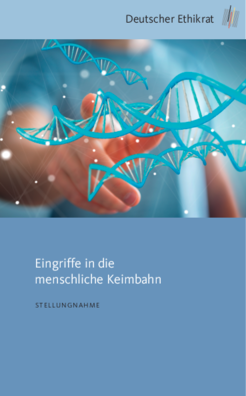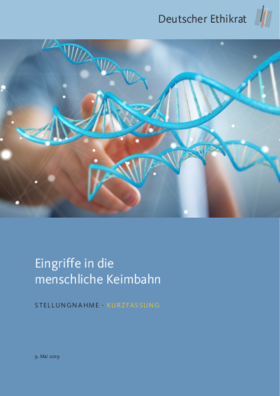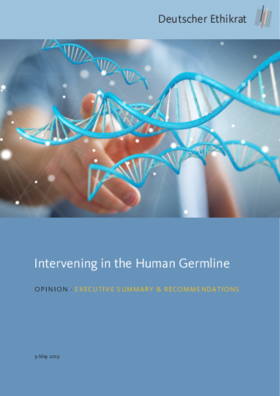Published: 9 May 2019
The birth of the first genetically modified babies in China in autumn 2018 triggered shocked reactions worldwide. With the help of new genome editing tools, intervening in the human germline has become possible. However, even at the technical level the uncertainties and risks are currently nowhere near manageable nor entirely foreseeable. From an ethical point of view, there are also still many open questions which the German Ethics Council has intensively discussed in a lengthy process.
In its Opinion, the German Ethics Council examines whether interventions in the human germline could be at all justifiable and according to which criteria the ethical admissibility of specific applications can be decided. It examines the further research process necessary before any clinical application and three possible areas of application for germline interventions: the prevention of severe hereditary disorders, the reduction of disease risks and the targeted improvement of specific human traits or abilities (enhancement). The analysis is based on eight ethical concepts: human dignity, protection of life and integrity, freedom, naturalness, non-maleficence and beneficence, justice, solidarity and responsibility.
The Council members come up with seven unanimous recommendations, including a call for an application moratorium, but also the agreement that the human germline is not categorically inviolable. On many issues, however, there are different positions and arguments. In its Opinion, the German Ethics Council examines these in detail and visualises the possible decision paths and their consequences in a decision tree.
An English translation of the executive summary and recommendations of the Opinion is available for download. The full report will be translated in due course.
Decision tree
In its Opinion “Intervening in the Human Germline”, the German Ethics Council has brought together questions, arguments and positions on the research and development of possible applications in this field in a decision tree. In the interactive graphic below, the various decision paths with their respective arguments and relevant ethical concepts can be visualised by moving the cursor over the small circles or by tapping them on a touchscreen.
Alternatively, the assignment of positions and arguments can also be traced in tabular form in the linked PDF version of the graphic. The detailed derivation of the arguments and ethical concepts is developed in the Opinion, which is also available as a PDF.



